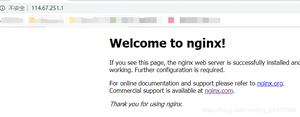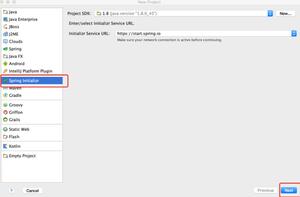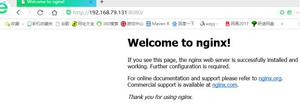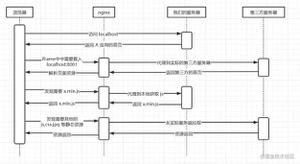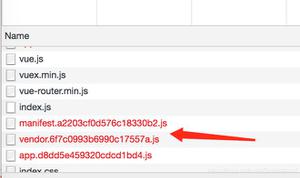Docker启动的Nginx如何解决浏览器跨域问题?
Nginx如何解决跨域问题
问题简述:
docker启动的nginx,修改配置文件default.conf,允许跨域不生效。
平台:MacOS M1pro
问题描述:
我使用Vue实现了一个前端项目,使用Nginx静态资源代理监听80端口,向本地后端服务http://localhost:9000/发送Get请求
// 跨域访问后端项目axios.get("http://localhost:9000/hello")
.then(function (response) {
console.log(response)
})
go语言实现的后端项目核心代码,启动服务监听9000端口
func handler(w http.ResponseWriter, r *http.Request) { _, err := fmt.Fprintf(w, "Hello, 第一条消息")
if err != nil {
return
}
}
func main() {
http.HandleFunc("/hello", handler)
err1 := http.ListenAndServe(":9000", nil)
if err1 != nil {
return
}
}
将Vue项目打包为dist,复制到docker容器的/usr/share/nginx/html目录中,配置文件为:
server { listen 80;
listen [::]:80;
server_name localhost;
#access_log /var/log/nginx/host.access.log main;
location / {
#允许跨域请求的域,* 代表所有
add_header 'Access-Control-Allow-Origin' *;
root /usr/share/nginx/html;
index index.html index.htm;
}
error_page 500 502 503 504 /50x.html;
location = /50x.html {
root /usr/share/nginx/html;
}
}
启动过程略过,可以发现跨域错误
直接使用浏览器访问9000端口是正常的:
如何在Nginx解决跨域问题,我已经了解前端虚拟代理、后端允许跨域方法。
本问题只讨论nginx如何允许跨域。
已经尝试的方法如下,已确定修改配置文件后重启nginx。
方法一:
#access_log /var/log/nginx/host.access.log main; location / {
root /usr/share/nginx/html;
index index.html index.htm;
#允许跨域请求的域,* 代表所有
add_header 'Access-Control-Allow-Origin' *;
}
方法二:
location / { add_header Access-Control-Allow-Origin *;
add_header Access-Control-Allow-Methods 'GET, POST, OPTIONS';
add_header 'Access-Control-Allow-Credentials' 'true';
if ( $request_method = 'OPTIONS' ) {
return 200;
}
root /usr/share/nginx/html;
index index.html index.htm;
}
方法三:增加always
location / { add_header Access-Control-Allow-Origin * always;
add_header Access-Control-Allow-Methods 'GET, POST, OPTIONS' always;
add_header 'Access-Control-Allow-Credentials' 'true' always;
if ( $request_method = 'OPTIONS' ) {
return 200;
}
root /usr/share/nginx/html;
index index.html index.htm;
}
网络上可以直接搜索到的方法基本都尝试过,求大佬解答,并进一步讨论相关理论(从Nginx实现方法角度)
特别强调,本项目使用Docker启动容器,因此容器向localhost分发流量的域名为host.docker.internal
回答:
假如我有一个网站 www.simple.com ,这个对应一个静态的html网站。
还有一个API域名 api.simple.com ,这个对应后端的API接口。
假如我在www.simple.com这个网站内,去调用 api.simple.com 这个域名的接口,这个时候,在没有任何配置的情况下,两个域名不一致,浏览器就会提示跨域,阻止访问api.simple.com这个域名的接口访问。
浏览器怎么去验证是否跨域,当浏览器发现 不是同源的请求,就会发起一个 OPTIONS 请求给被访问的接口,只有接口返回了同意跨域 (Access-Control-Allow-Origin/Methods/Headers) ,浏览器才会放行这个跨域请求。
所以解决跨域的唯一方法,就是被访问的一方,设置响应头,允许被跨域访问。
你这里的配置文件,我看到都是在给 html 设置同意跨域,而不是在给接口设置同意跨域。
nginx 设置允许跨域,就是用add_header这个指令,添加允许跨域的请求头。
跨域问题,应该和nginx是不是在容器内运行,没有任何关系,它只和接口的OPTIONS响应有关系,响应是允许那么就可以跨域,响应是不允许,那么就不可以跨域。
如果你要用nginx解决跨域,配置可能这两种会比较常见:
(随手写的例子,不一定能跑,意思到了就行)
第一种方式:
server { listen 80;
server_name www.simple.com; # 用一个域名部署前端项目
location / {
root /usr/share/nginx/html;
index index.html index.htm;
}
}
server {
listen 80;
server_name api.simple.com; #单独用一个api域名代理到后端,并设置允许跨域
location / {
proxy_pass http://127.0.0.1:8080;
add_header 'Access-Control-Allow-Origin' 'http://www.simple.com'; # 允许www.simple.com跨域
}
}
第二种方式:
server { listen 80;
server_name www.simple.com; # 这里前端和后端api都使用同一个域名访问,就没有跨域的问题了。
location / {
root /usr/share/nginx/html;
index index.html index.htm;
}
location /api {
proxy_pass http://127.0.0.1:8080;
}
}
以上是 Docker启动的Nginx如何解决浏览器跨域问题? 的全部内容, 来源链接: utcz.com/p/935276.html


